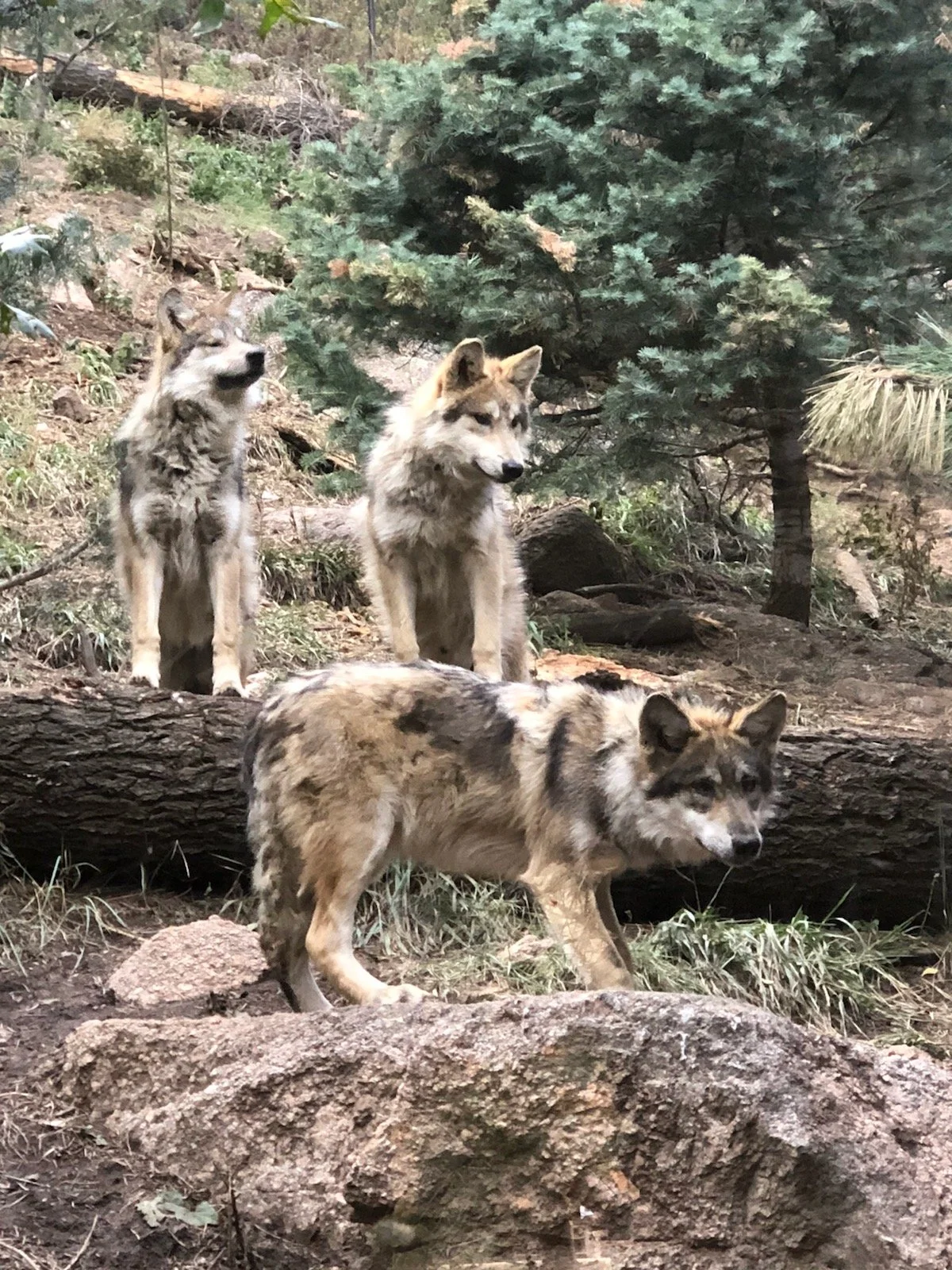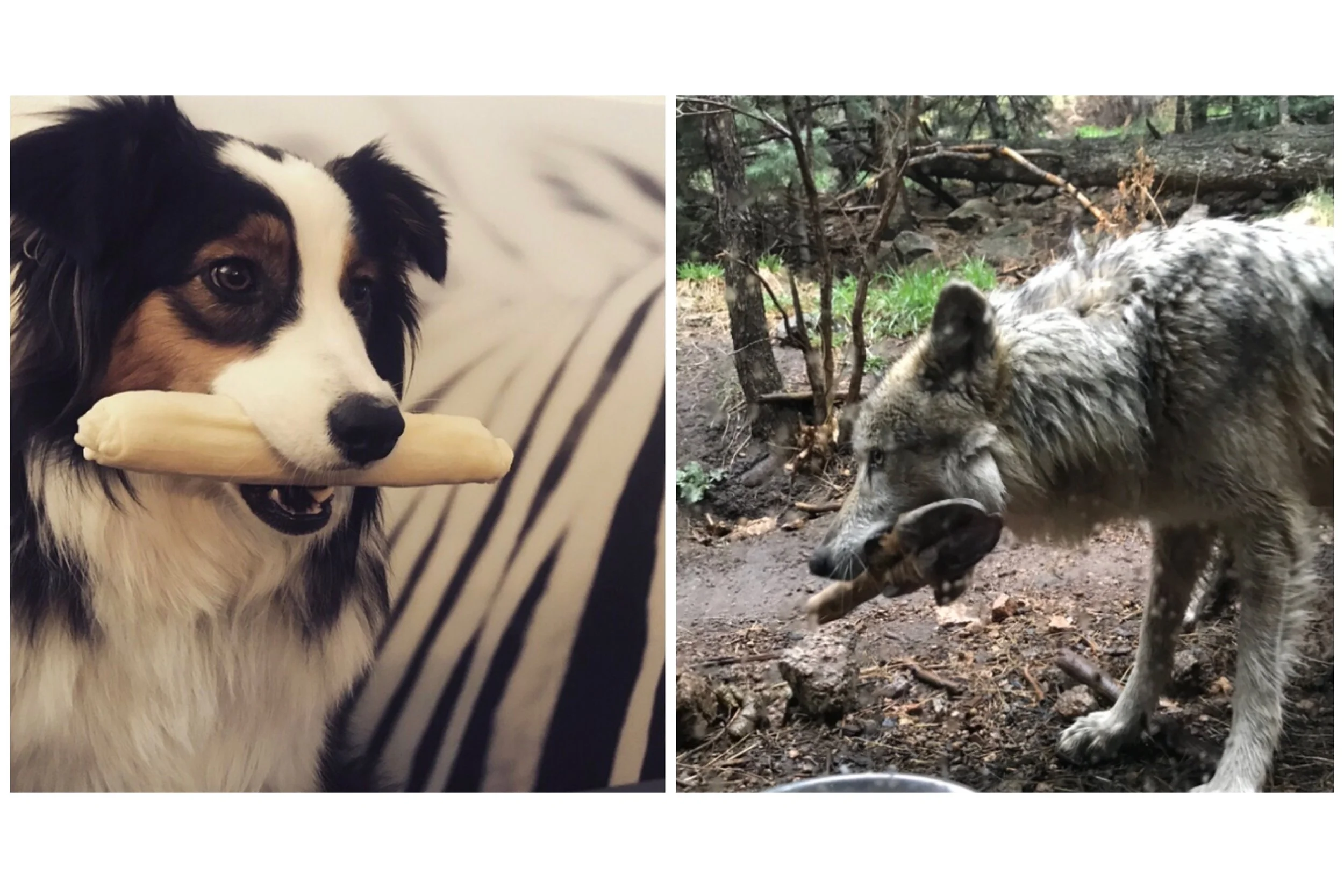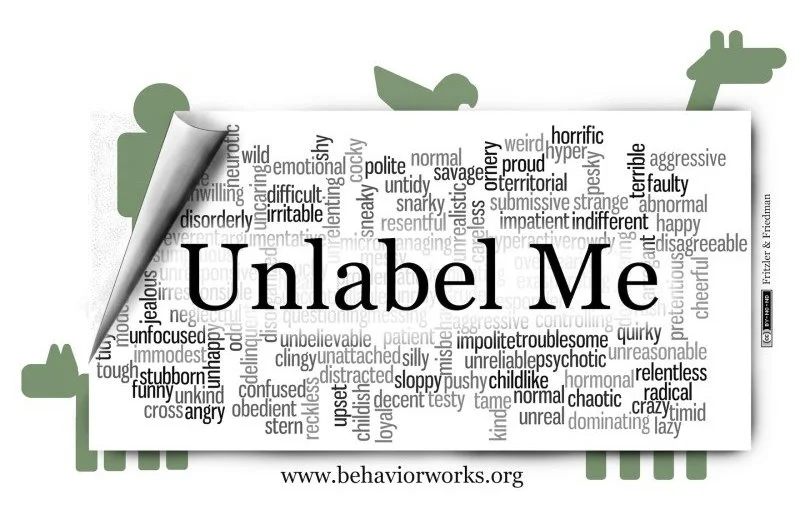The Alpha Construct
The alpha construct, or dominance theory, has been circulating in the dog community for decades. It emerged from the 1940s when a scientist studied wolf dynamics for the first time and initially believed there to be a hierarchy in the wolf pack. That’s when the idea emerged that a top dog is the “alpha” and he or she competes to maintain a power role over resources in a pack. The same scientist spent his career trying to take his own studies off of shelves because his conclusions were admittedly inaccurate. In later findings, what he discovered was that a wolf pack consists of a family unit that specializes in cooperative behaviors such as hunting as a team, raising offspring together, and patrolling territory.
The Mexican wolf pack I worked with at Cheyenne Mountain Zoo was a family that consisted of mom, dad, and 2 generations of offspring. They all had different relationships with one another, including some drama between sisters as they reached sexual maturity, but also beautiful relationships that displayed cooperation like older sisters babysitting the newborn in the den, or mom wolf, Luna, bringing food to her mate, Navarro, when he was too shy to come down to eat. They played together after feeding, looking very similar to social dogs in a dog park. Like dogs, they sometimes displayed subtle communication to one another that meant “I’m uncomfortable, please give me space” or “That’s mine, get away,” but that was communication due to conditions, not due to a hierarchy. The pack certainly had a leader in mom Luna, but in a way that displayed experience in the routine at the zoo, and she was nurturing and protective over her family. She even peed on the food so that “neighboring competitors” didn’t dare to steal any.
And yet, traditional dog trainers are ever present in continuing the message to display dominance over your dog to teach them who is alpha. Traditional dog trainers use the alpha construct as an explanation for unwanted behavior from a dog, usually aggressive behaviors like showing teeth, growling, biting, etc. As a response, dogs are devastatingly and unnecessarily put into forceful and abusive positions beneath their owner. Dominance theory has stood the test of time despite all of the data from wolf natural history and from what we know about the science of behavior. The fallout from applying such coercive tactics can include a damaged relationship with your dog, increased aggression, apathy, avoidance, and fear.
It’s not unheard of to see humans apply labels, such as alpha, to animal behavior as an explanation for what’s going on. It’s easy to see a behavior and say it’s because the animal is…
Aggressive
Jealous
Anxious
Depressed
Stupid
Mean
But behavior is not what an animal is, or has. Behavior is measurable and observable. Behavior responds to current conditions and behavior changes when conditions change. In other words, behavior is a function of the environment. If conditions are ignored and behavior is written off with a label as an explanation, we can’t solve the problem.
I love this graphic from Dr. Susan Friedman. It’s been a poster on the wall at almost every zoological facility that I’ve worked at and makes a great decoration for the fridge at home (wink wink). It’s acted as a behavior change prompt for myself. It’s a part of our culture and learning history to place names before descriptors, and maybe you’ve felt firsthand how messy and unclear the dialogue can feel. When I was first getting used to describing behavior, it felt really awkward. I remember telling my manager my first year zookeeping, “The macaw was acting crazy when I went to feed him!” To which he responded, “What does that look like?” After backing up, I could describe that when I opened the door to the macaw’s enclosure, he opened his wings, fluffed his feathers, and leaned forward with an open beak. Now we’re on the same page.
All labels are constructs when we don’t assign them to observable terms. The alpha label is particularly harmful because of the procedures that take place in response, but at best, labels just name a behavior. We should cater our questions to what behavior looks like, what conditions set the stage for the behavior to occur, and what the animal is gaining or removing from the environment as a consequence.
Behavior is not for us to control or dominate. Behavior gives us information about the conditions surrounding it. A dog raising their lip is dialogue for needing space, and that space should be honored. But we can also help the dog build confidence with skills and trust building through positive reinforcement training and thoughtful arrangement of the environment to set the animal up for success.
Dogs are most commonly assigned to the alpha label, but truthfully, so many animals fall under the umbrella of dominance theory, including macaws who are also just communicating through body language and changing behavior based on conditions as well. It’s never too late to drop the labels and change procedures; we just have to get to the function of the behavior first for baseline information.



